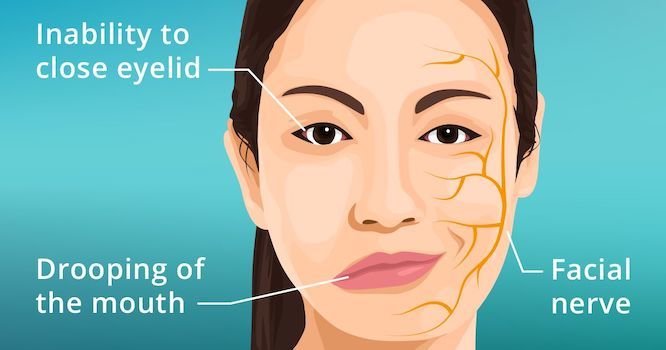Exercises for Bell’s palsy
Exercises for Bell’s palsy are an essential part of physiotherapy for this condition. They help activate nerves and strengthen facial muscles, improving facial expression and promoting healing. Here are some exercises that can be done to help manage the symptoms of Bell’s palsy:
- Eyebrow movement: This exercise involves moving the eyebrows up and down. It can help strengthen the muscles around the eyes and improve facial expression.
- Eye opening and closing: This exercise involves opening and closing the eyes. It can help improve the ability to blink and close the eyes, reducing the risk of eye dryness or excessive tearing.
- Smiling exercise: This exercise involves smiling with the mouth closed and then opening the mouth wide. It can help improve the ability to make facial expressions and promote healing.
- Lip pursing: This exercise involves pursing the lips together and then releasing them. It can help strengthen the muscles around the mouth and improve facial expression.
- Eyebrow lift: This exercise involves lifting one eyebrow as high as possible, using the fingers to assist. It can help improve the ability to make facial expressions and promote healing.
- Smile one sided assisted: This exercise involves smiling assisted on one side by lifting one corner of the mouth upwards. It can help improve the ability to make facial expressions and promote healing.
- Puffa: This exercise involves keeping the mouth shut and blowing outwards bulging one cheek. It can help strengthen the muscles around the mouth and improve facial expression.
- Face Massage: Rubbing the skin on the cheeks down towards the mouth, till the corner of the mouth can help promote relaxation, relieve pain, and improve circulation.
These exercises should be done in front of a mirror, and the affected side of the face should be supported with the fingers. Each exercise should be repeated 10 to 25 times, three times per day. It is important not to overload the muscles and to rest and decrease stress to help with recovery.
It is recommended to see a healthcare provider within 72 hours of developing symptoms of Bell’s palsy, as early treatment can help speed recovery. Treatment usually includes steroids and exercises, and facial exercises have been shown to stimulate facial nerves, restore muscle strength, and improve movement and coordination.
In summary, exercises for Bell’s palsy are an essential part of physiotherapy for this condition. They help activate nerves and strengthen facial muscles, improving facial expression and promoting healing. It is important to see a healthcare provider within 72 hours of developing symptoms, and to start treatment as soon as possible. Facial exercises should be done in front of a mirror, and the affected side of the face should be supported with the fingers. Each exercise should be repeated 10 to 25 times, three times per day. It is important not to overload the muscles and to rest and decrease stress to help with recovery.
Citations:
[1] https://www.youtube.com/watch?v=GfPq2oDHcjk
[2] https://www.surreyphysio.co.uk/top-5/best-5-exercises-for-bells-palsy/
[3] https://www.goodrx.com/health-topic/neurological/exercises-for-bells-palsy
[4] https://www.youtube.com/watch?v=8PcHtClQWyI
[5] https://www.hopkinsmedicine.org/health/conditions-and-diseases/bells-palsy
